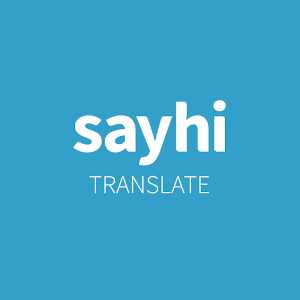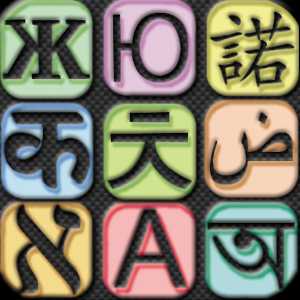10 Most Useful Korean Translator Apps, Sites & Extensions
 Written byCourtney Welch
Written byCourtney Welch- Read time10 mins
- Comments0

Learning Korean isn’t hard, but add in an unreliable translation app and things can turn frustrating.
No worries. I’ll spare you the time by sharing what I think are the best Korean to English / English to Korean translation Apps that you can use on your Apple or Android phone.
I’ve tried dozens of Korean apps over the years, and these are the best ones based on user-friendliness, accuracy of translation, features, and visual appearance.
Check out my feedback below and pick a few to download on your phone, so no matter where you are, you can translate Korean.
English To Korean Translators
Papago

This app’s possibly the most well-known app on this list and my personal go-to.
Papago was created by the Korean company Naver.
While several languages are available for translation, Papago specializes in Korean.
This app offers many useful features including speech-to-text, conversation translation, image translation, and a study camera.
I’ve found the image feature to be the most useful. It allows the user to snap a quick picture of the text they want translated, then the translated text appears over the image.
While the app isn’t 100% accurate, it does a pretty good job when given the right context.
It’s also incredibly easy to use and the design of the app’s appealing to the eyes. You can rely on this app to help you learn Korean. Try downloading it to check out all the features I mentioned and explore some of the ones I didn’t.
Pros:
- Several languages available for translation
- Specializes in Korea
- Image translation
- Study camera
- Conversation translations
- Reliable translations
- Visually appealing interface
- Phrasebook
- Word cards
Cons:
- Requires sign-in to save words
Naver Dictionary

While this one is technically more of a dictionary than a translation app, it’s still incredibly useful when you are looking for the right word to use or want to look up the translation of a word.
This app’s also made by the Korean company Naver and specializes in Korean, though it does offer other languages.
Naver Dictionary has an incredible amount of features including TOPIK vocabulary word sets, word of the day, and conversation of the day. There’s also a feature that allows you to draw a Korean word you saw into the app to get a direct translation.
The app’s interface is slick and user-friendly. It’s accurate with translations and has the translation to 95% of the words you are looking for. I use this app on a daily basis and recommend it to any Korean learner as a must.
Pros:
- TOPIK vocabulary lists
- Today’s conversation
- Korean lesson with Kdrama
- Today’s word
- Example sentences
- Reliable translations
- Made for Korean learners
- Options to write in words
- Image translation
- Visually appealing interface
Cons:
- More of a dictionary than a translation app
- Requires sign-in to save words and settings
Daum Dictionary

Daum Dictionary doubles as a translation app and dictionary. Kakao Corp, a Korean company, created it. As such it focuses on Korean as its main language.
Daum stands apart from other translation apps with its news feature. Daum has common news sites linked to the app. While reading the news, you can click on words you don’t know to see the English or Korean translation of the word. This is great for advanced Korean learners looking to learn Korean and stay updated on the news.
Besides the news feature, Daum Dictionary has a picture feature that allows the user to take a picture of the text they want translated and a word book to save words for future review. The app’s easy to use, visually appealing, glitch-free and translations are usually very accurate.
While this app’s great for translation and study purposes, it’s not for everyone. The app’s entirely in Korean, which might make it hard for beginner Korean learners to interact with. Also to use some of the app’s features an account through Daum or Kakao is required. These are both Korean companies, and therefore use Korean authorization methods, it could therefore be a little difficult to create an account.
I recommend this app to intermediate or advanced Korean speakers who are looking not only for an app that provides great translations but also a great study tool.
Pros:
- Translation app and dictionary
- Camera translation
- Study with the news
- Wordbook
- Well-designed interface
- Reliable translations
Cons:
- Have to log in through Daum or Kakao talk to save words
- The app focuses on English - Korean translations
- app’s completely in Korean
Flitto - Translate & Learn

Flitto is your average translation app with a twist. Users can choose to participate in the translating for points, which can be cashed in for gift cards. If you choose to participate in the translation program you will be asked to take a placement test for your second language. You will then be given sentences to translate. Each sentence is sent to be reviewed and when approved you earn points!
You can also use points to request translations from other people. Even if you don’t want to participate in the program, this app’s great for Korean - English translations and vice versa. The app’s glitchless, user-friendly, and accurate. Overall, Flitto is definitely worth the download.
Pros:
- Earn money by translating sentences
- Reliable translations
- Proofreading by native speakers
- Nice design
- Camera translation
Cons:
- Can only participate in translating program if your Korean is intermediate or above
- Very few features
- Proofreading requires the purchase of points
- No dictionary
iTranslate Translator

iTranslate is your basic translator that provides additional features including offline mode, voice conversations, camera translation, and ad-free service for a monthly fee of $4.99. Without the monthly subscription, you can only have access to the basic translator.
While this app’s simple, it provides reliable translations 95% of the time. If you don’t need any of the fancy features that other apps have and just want to keep things simple, then this app might be a good fit for you.
Pros:
- Camera Translation
- Simple interface
- Available offline
- Speech-to-text translation
Cons:
- Phrasebook not available for Korean
- Have to pay $4.99 to be ad-free
- Most feature not available unless you subscribe
- No dictionary
Korean - English Translator Klays-Development

This app’s probably the most basic app on here. It’s exclusively a language translation app and does not offer any features besides that. It was created by Klays-Development, a company that specializes in language translation. This app focuses exclusively on English and Korean.
The app provides great translations and is easy to use, but the permanent ads on the bottom of the screen can be annoying. The ad-free version of the app’s available for $1.99. Overall, this is a great app for someone looking for something simple and easy to use.
Pros:
- Reliable translations
- Simple interface
- Speech-to-text translations
Cons:
- Have to pay $1.99 to be ad-free
- No features besides translation
- Terrible UI
- No dictionary
Microsoft Translator

With this app, Microsoft succeeded in creating a beautiful app that provides accurate translations. This app’s design truly is beautiful and clearly made with the user in mind.
It also has cool features like camera translation, conversation translation, and a phrasebook with essential Korean phrases. If the visual appearance of an app’s the most important thing to you, this is the app for you.
Pros:
- Beautiful app design
- Speech-to-text translation
- Camera translation
- Conversation translation
- Offline translations
- Phrasebook
- Reliable translations
Cons:
- No dictionary
SayHi Translate

SayHi is a company linked with Amazon.
It’s a normal translation app except it works almost exclusively through speech-to-text. This app was designed to be spoken into. The app’s key feature is a conversation setting that allows you and a friend to talk in two different languages. SayHi will translate your conversation so you can understand each other.
The user interface is user-friendly and looks decent. The translations are also reliable. This app’s great to use when traveling in Korea or communicating with Korean speakers.
Pros:
- Made for conversation
- Speech-to-text translation
- Camera translation
- Reliable translations
- Visually appealing interface
Cons:
- Can’t type into the app
- Very few features
- No dictionary
Translate All Languages

Translate All Languages offers three simple features, translation, conversation translation, and a dictionary. While this app’s translations are reliable, the user experience can be interrupted by ads. The user can pay a one-time fee of $6.99 and use the app ad-free. The app also occasionally runs into some glitches that limit access to features.
Pros:
- Conversation translation
- Dictionary
- Reliable translations
- Speech-to-text translation
Cons:
- A fee of $6.99 to get rid of ads
- Glitches
- Not well designed
Translate Korean to English GreenLife

This app comes with a plethora of features for not just Korean, but almost every other language. Its main feature is the translation feature. It’s very simple but accurate. There are also options to take a picture of what you want to translate and record a conversation you want translated.
Besides translation features, GreenLife has some language learning features like a daily word, which is sent via a notification to your phone every morning, There’s also crossword games, a phrasebook, flashcards, and an offline dictionary.
While this app’s reliable and offers many language learning features, the interface is not the most appealing to the eye and the app occasionally crashes, closing on its own. The app also uses pop-up ads that sometimes make you wait a few seconds to use a feature. The user can pay a one-time fee of $2.99 to use the app without ads.
You can find many of this app’s features on other apps, so I recommend this app only if you are interested in the crossword and daily word features.
Pros:
- Reliable translations
- Camera translations
- Conversation translations
- Daily word
- Crossword game
- Phrasebook
- Flashcards
- Offline dictionary
- Speech-to-text translations
Cons:
- Pay $2.99 to be ad-free
- Ugly design
- App occasionally crashes
Conclusion
That’s it for my list of Korean-English translation apps.
While there are many more apps out there, I believe these to be the most reliable and user-friendly.
Also be sure to take a look at my list of favorite online Korean courses.
Are there any other Korean translation apps or extensions that I forgot to include?
Post them below!
 Grab the link to this article
Grab the link to this article